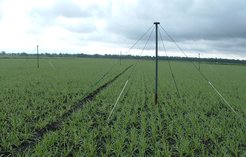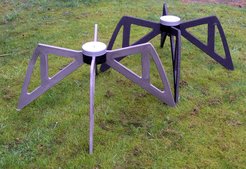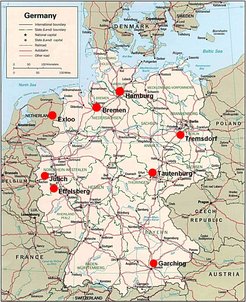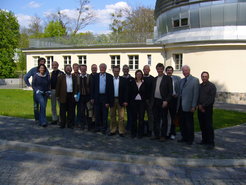LOFAR - a new radio telescope in Germany
On May 3, the first meeting of the German LOng Wavelength Consortium (GLOW) took place at the Astrophysical Institute Potsdam. On this occasion, the members elected Prof. Anton Zensus, Director of the Max-Planck-Institut für Radioastronomie in Bonn, as chairman and Prof. Marcus Brueggen, Professor of Astrophysics at the International University Bremen, as deputy chairman.
Members of this consortium are the astronomical institutes of the universities Bochum, Bonn, Cologne, the Max-Planck-Institut für Radioastronomie in Bonn, the International University Bremen, the Max-Planck-Institut für Astrophysik in Garching, the Sternwarte Hamburg, the Forschungszentrum Jülich, the Astrophysical Institute Potsdam and the Thüringer Landessternwarte in Tautenburg.


LOFAR is the first telescope of its kind: it is the first digital radio telescope and has no moving parts. In contrast to classical dish-like radio antennae, LOFAR consists of a set of simple, small radio antennae. One of the worlds fastest supercomputers, IBM's 'blue gene' located in Groningen, correlates all incoming data. Its computing power of 27 Teraflops and its memory of 1 Petabyte are needed to digest the huge data rate of 500 Gbits/second that comes in from hundreds of stations. The computer combines the data from the different antennae such that LOFAR acts as a giant radio-telescope with an equivalent dish-size of several hundred kilometres. Thus, astronomers will be able to observe the sky with unprecedented resolution in an almost unexplored part of the electromagnetic spectrum. Also, the digital nature of the telescope allows astronomers to observe in several directions at the same time.

LOFAR is currently under construction by the radio-astronomical institute ASTRON in Dwingeloo in the Netherlands. In Western Frisia, the assembly of the first of 77 core stations has started. The capabilities of LOFAR can be increased tremendously by extending it to a European level, thus creating a European Sensor Network. The GLOW consortium plans to contribute a total of twelve LOFAR stations at sites in Germany - of which six are planned in more detail already (Bremen, Effelsberg, Garching, Hamburg, Jülich, Tautenburg and Tremsdorf). The first LOFAR station with a size of 110 times 60 metres will be constructed this year near the Effelsberg 100m radio telescope in collaboration by ASTRON and the Max-Planck-Institut für Radioastronomie in Bonn.




